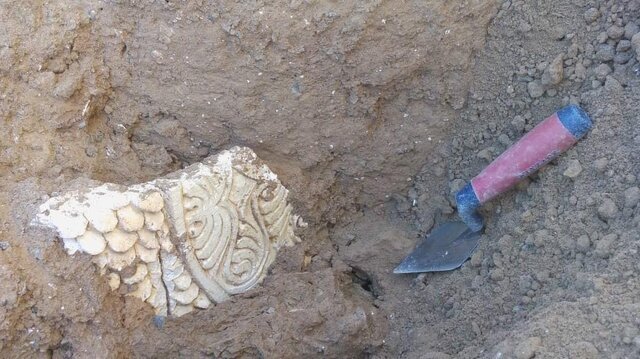Ruins of Sassanid fire temple discovered in Iran

TEHRAN – An archaeological team has found remnants of a fire temple, estimated to date from the Sassanid era, during its excavations in northeast Iran.
“A recent excavation conducted in a site near the village of Robat-e Sefid/Bazeh Hur has revealed remnants of a fire temple along with arrays of murals and plasterwork,” ISNA quoted archaeologist Meysam Labbaf-Khaniki as saying on Monday.
The survey has yielded magnificent pieces of plasterwork decorated with geometric, plant, and human motifs, which sheds new light on the religious and economic aspects of the site.
“The discoveries will open a new chapter in the history of Iranian arts during the Sassanid epoch,” ILNA quoted Labbaf-Khaniki as saying on Sunday.
The fire temple once had an arched brick space and a hypostyle hall in the form of a Chahar-Taq (Chahartaq), the archaeologist explained.
Such an architectural form turned into the most typical form of Sassanid religious architecture, relating closely to the expansion and stabilization of Zoroastrianism under the Sassanid reign and continuing during the Islamic era thanks to its usage in religious and holy buildings such as mosques and tombs.
Labbaf-Khaniki noted each of the columns of this hall was decorated with capitals bearing exquisite stuccoworks.
Since 2014, the archaeologist has taken part in several surveys at the ancient site to study the Sassanid monument itself, carrying out the plan of the original building and identifying further structures around it.
The Sassanid era is of very high importance in the history of Iran. Under Sassanids, Persian architecture and arts experienced a general renaissance. Architecture often took grandiose proportions, such as palaces at Ctesiphon, Firuzabad, and Sarvestan, which are amongst the highlights of the ensemble.
Apart from architecture, crafts such as metalwork and gem engraving grew highly sophisticated, yet scholarship was encouraged by the state. In those years, works from both the East and West were translated into Pahlavi, the language of the Sassanians.
AFM
